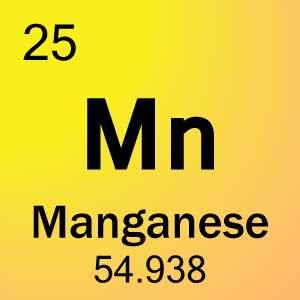Question #609e5
1 Answer
Explanation:
The idea here is that you must find a conversion factor that will allow you to go from grams of manganese,
The cool thing is that this conversion factor can be found in the Periodic Table of Elements, so grab one and look for manganese.
Now, the conversion factor that you're looking for is the molar mass of manganese, which is listed at the bottom of the element's box in the Periodic Table.
In this case, you know that manganese has a molar mass of
#M_M = color(red)("54.938 g")color(white)(.) color(blue)("mol"^(-1))#
This means that every mole of manganese has a mass of
#"You get"color(white)(.) color(red)("54.938 g") color(white)(.) "for every" color(white)(.)color(blue)("1 mole") color(white)(.)"of Mn"#
You can now use this conversion factor to figure out how many moles of manganese would be present in your sample
#1.00 color(red)(cancel(color(black)("g"))) * "1 mole Mn"/(54.938color(red)(cancel(color(black)("g")))) = color(darkgreen)(ul(color(black)("0.0182 moles Mn")))#
The answer is rounded to three sig figs, the number of sig figs you have for the mass of manganese.


